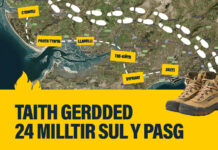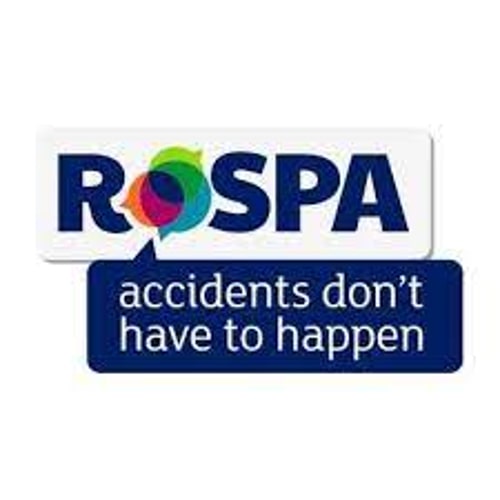- First of its kind NCMD report released today which RoSPA contributed to
- Data shows that collaboration and education are ‘vital’
- Road collisions and drowning are two of the biggest killers
Collaboration and education are key in keeping the nation’s children safe from injury and death, that’s the message today from The Royal Society for the Prevention of Accidents (RoSPA) in the wake of new child mortality data released by a leading University.
Data from the University of Bristol’s National Child Mortality Database (NCMD) team, created in collaboration with RoSPA and other key organisations, shows that 644 children aged up to 18 in England died due to traumatic injuries between 1 April 2019 and 31 March 2022; of these, 211 died because of a vehicle collision, 160 died due to violence and maltreatment, and 84 died by drowning.
A further 189 died due to other traumatic injuries such as drug or alcohol poisoning, suffocation, falls, choking, foreign object consumption, fires, electrocution, falling objects and dog attacks.
According to RoSPA, Accidents remain the UK’s biggest killer of children and young people up to the age of 19, and are the biggest cause of preventable, premature death up to the age of 60.
The report (which used data from the NCMD cohort, a first-of-its-kind initiative to collect comprehensive and timely information on every child death in England) sought to identify risks and patterns from the 9,983 child deaths that occurred in England between 1 April 2019 until 31 March 2022.
Ashley Martin, Public Health Advisor at RoSPA, worked closely with the NCMD on the report. He said:
“We welcome this valuable report and data analysis that is an important step forward in understanding the scale and causes of accidental death among children, a significant number of which occur in their own homes. The report confirms the tragic toll of accidental death among children and the effects on their families and makes vital recommendations to Government ,organisations and. charities.
“Now, we need to come together to understand how to use these findings to reduce the death toll and keep more children and young people safe from harm.”
In terms of road collision data, the report found:
- There were 211 deaths of children and young people due to vehicle collisions over the last three years.
- Death rates were highest for 15-17 year olds, with children in deprived areas disproportionately affected. There were 37 (17.5%) deaths of children aged under 5, 70 (33.2%) deaths of children and young people aged 5-14 years, and 104 (49.3%) deaths of young people aged 15-17 years.
- Collisions where the child was in the vehicle as a driver or passenger were most common (35% of all deaths)) followed by deaths where the child was a pedestrian (32%). The most common type was car or van collisions for 15-17 year olds and pedestrian collisions for those aged 10-14.
- Contributory factors in these crashes were speeding (27%), risk taking, consumption of drugs and alcohol (by the child or driver) and non-use of appropriate safety equipment (20%). In some instances, complex home circumstances was identified as a factor. Road design was also a factor in many collisions.
Rebecca Guy, Road Safety Manager at RoSPA, said:
“We strongly support the recommendation that all primary school children receive road safety education and are looking at ways we can build on our previous work with parents and schools.
“We also believe that road layout and design needs to be suitable for all – pedestrians, cyclists and motorised vehicle users included and agree that support for witnesses to vehicle collisions should be improved. We look forward to taking the results of these findings and using them as a basis for our lifesaving accident prevention work.”
The report also showed that deaths due to drowning increased over the three years, with 20 deaths in 2019-20, rising to 37 in 2021-22. They occurred most commonly in inland bodies of water (such as a river or lake) or in the bath and increased over the three years. The children and young people most at risk were those aged under five or over 15, males, those living in the most deprived neighbourhoods, and children from a Black or Black British ethnic background.
Over half the deaths occurred during the summer months, although some evidence shows that deaths in the spring were rising the fastest. In 83% of cases, the child or young person was unsupervised at the time of death. Five of the seven deaths of children under one who drowned in the bath were in a bath seat.
David Walker, Head of road and leisure safety at RoSPA and Executive Lead at the UK National Water Safety Forum
“This report is a clear call to action that better support and awareness is needed for families and communities – so that everyone can enjoy and respect the water.
“As we look forward to World Drowning Prevention Day on 25 July, this report provides yet more evidence that all Government departments, led by Cabinet Office, must take a coherent and coordinated approach to drowning prevention across the UK.”
Help keep news FREE for our readers
Supporting your local community newspaper/online news outlet is crucial now more than ever. If you believe in independent journalism, then consider making a valuable contribution by making a one-time or monthly donation. We operate in rural areas where providing unbiased news can be challenging. Read More About Supporting The West Wales Chronicle

























